C9 Corvette: Pondering the next generation of an American legend
The C8-generation Corvette’s shift to a mid-engine layout was the biggest transformation in the sports car’s storied history and, for me, the culmination of decades reporting and advocacy. A tough act to follow in other words. Yet the C9 Corvette, already in the works, will bring a change far more dramatic: electric propulsion.
Consider the evidence:
- GM Chair Mary Barra has long touted the company’s all-electric future. GM has $35 billion committed to the introduction of 30 BEVs by 2025, with hopes of selling a million electrics by 2030 and plans to convert even heavy-duty trucks to electric drive by 2035.
- During a comprehensive overhaul of its product development group, most of the Corvette engineering team was reassigned to GM’s Autonomous and Electric Vehicles organization.
- Chevy recently began polling C8 owners about their interest in an “electric sport vehicle.”
Greasing the skids of this transition, two hybrids will round out the C8 family—something we started reporting on as early as 2017. Following the just-announced all-gas 670-hp Z06, the Corvette E-Ray will supplement the 495-hp LT2 V-8 with two electric motors driving the front wheels. The last hurrah will be the king-hell Zora, promising electric motors and a twin-turbo V-8 to top 1000 total system hp.
What follows is our informed speculation about the next-generation Corvette—the C9—that promises pure-electric battery power. Yes, it’s a ways off, but we’re betting that some of our dream will come true by the time the clock strikes 2030. By then, today’s GM bosses—Corvette’s global chief engineer Tadge Juechter, GM President Mark Reuss, and Barra—will be retired and sipping umbrella potions.
Of course, some of you will loathe the electric C9 forecasts that follow. Feel free to let us know your passionate thoughts in the comments section. We’ll relay your heartfelt opinions to the above GM bosses while they’re still plotting our beloved Corvette’s fate.
C9 Design: Exterior
Our thinking here is perhaps optimistic—lofty even, in certain ways—but it is rooted in both tradition and real-world expertise. We’ve gathered the work of three veteran designers to assume the weighty responsibility of pondering what the Corvette of the future might look like. At the very least, these drawings illustrate how Corvette design language might marry with the distinct costs and benefits of an electric powertrain. If we were in the big seat at the Ren Cen, certainly, the final product would look a little something like the collective visions of these three brilliant minds.
During 41 years at GM, Dick Ruzzin worked on 140 programs as creative designer, studio head, or director of design for Chevrolet and GM Europe. The inspirational mid-engine Corvette sketch he created fifty years ago is presented here with minor retouching. The stunning piece looks futuristic even now, half a century after its completion, and in many ways the long-awaited C8 of today owes its existence to the high-minded scribblings of GM designers like Ruzzin. The colorful drawing serves as the foundation around which our next two designs were born.
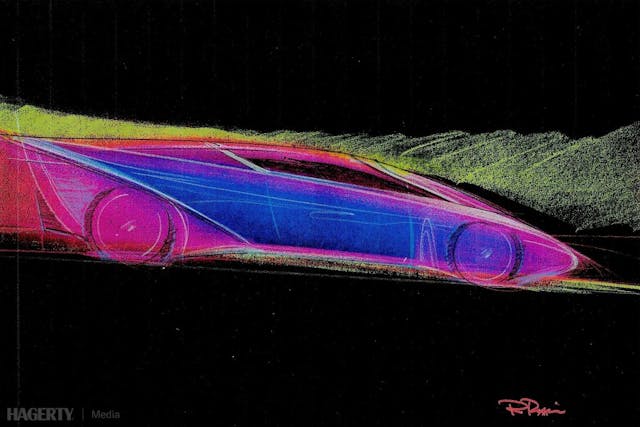
At 19, Pete Brock was the youngest designer GM ever hired. His 1958 Sting Ray racer sketches evolved into the beloved 1963 production Corvette (C2). Following a stint as an instructor at his LA Art Center alma mater, Brock designed the Cobra Daytona Coupe at Shelby American. He then founded Brock Racing Enterprises (BRE) to road race Datsuns, Hinos, and Toyotas. Later, he manufactured hang gliders followed by ultra-low drag car hauling trailers. His BRE enterprise still thrives today.
Brock provided us with a hand-drawn sketch of his C9 brainchild, complete with detailed annotations as follows:
- Narrower wheels and tires diminish unsprung weight and inertia, reducing the energy required to accelerate and brake those assemblies.
- Narrower wheels also increase the room available inside the chassis, reducing rolling resistance and aerodynamic drag.
- Ride is improved by increased tire compliance.
- Roof and windshield design features: moving A-pillars inward increases the side window curvature. Peak roof height is over the driver’s head. Increased roof radius diminishes side wind sensitivity. Roof slopes forward from peak height to minimize the angle between windscreen and roof.
- Cockpit: wider at driver’s shoulder height.
- Rear body area provides maximum storage space. Upper rear body line is 7 degrees downward from horizontal to improve attached air flow.
- Side body: beltline crease is homage to 1959 XP87 Sting Ray racer design. 4.5-inch ground clearance. Aero fences along inside rear tire surface prevents air flow out of rear diffuser. Body rises aft of rear wheels at 7-degree angle. Width at rear wheels diminished by 3 inches.

Kunihisa Ito, our lead designer and author of the three drawings below, retired last year following 16 years as an instructor at Detroit’s College for Creative Studies. Following graduation in 1977 from LA’s Art Center School of Design, Ito joined GM. A consultancy he ran in Japan from 1989 to 1999 yielded the Jiotta Caspita, considered Japan’s first supercar. During stints at Ford, Ito contributed to Mazda’s RX-8, Ford Edge, and Ford GT designs. At Nissan, he helped shape Sentra and Maxima production models. Over the years Ito’s reach has stretched to design projects in China, Germany, and Korea.
Using Brock’s sketch and specifications as a basis for his renderings, Ito’s C9 is clearly inspired by Bill Mitchell’s famed ’63 split-window design. Also note the doors that cut into the roof for both practical ingress and aesthetics.
Because full-electric propulsion dramatically diminishes the amount of air penetrating outer body surfaces, our imagined electric C9 Corvette eschews any showy grille or scoop openings. A flat floor and an aggressive rear diffuser remain to aid aerodynamic downforce.
“The proportions that the C8 pioneered with the mid-engine layout could be modified with the flexibility that the components for an electric powertrain allow,” Ito explains. “This would make the C9 Corvette smaller in overall length than any iteration since 1962. As electric autos evolve, we must think creatively to reduce weight and size is the most efficient way to do this.”
The major C8 carryovers are a low, short nose and a passenger cabin positioned well ahead of the rear axle. In other words, we expect the electric C9 to bear a familial resemblance to its revolutionary mid-engine C8 predecessor. A generous overall width provides the space required for ultra-low-profile tires. Height will be slightly lower than C8 because the bulky battery pack won’t be located beneath the driver and passenger as is common practice with GM’s other BEVs that employ a skateboard-type platform. Keeping the C8’s rear-biased weight distribution is essential to maintain launch traction, appropriate steering effort, and minimal understeer at the adhesion limit.
Today’s body styles—a targa with a single-piece lift off roof and a convertible—will remain. That said, we hope GM’s future Corvette designers dispense with today’s hideaway hardtop, which necessitates unattractive buttresses to house the hinge hardware.
C9 Design: Interior

The best guess as to what the inside of C9 will look like is the 2016 concept sketch shown here, which GM Design shared on its Instagram channel. Drawn by GM’s interior design manager Tristan Murphy, it reveals a low beltline, a sporty steering yoke, and a prominent center tunnel that would perfectly suit the next Corvette. Murphy should know—he designed the C8 Stingray’s interior as well as the cockpits for Cadillac’s Lyriq and Celestiq BEVs.
C9 Structure
The welded, riveted, and bonded aluminum spaceframe introduced in 2006 for the C6 Z06 has proven its mettle as a light, stiff, and cost-effective structural solution. It should live on with appropriate changes to accommodate coming propulsion, braking, suspension, and battery-stowage needs. Advanced carbon-fiber composites will continue in structural roles such as bumper beams and floor panels.
C9 Steering, suspension, braking
Corvettes have long been a showcase for advanced chassis materials such as molded fiberglass springs, magnesium subframes, and cast- and forged-aluminum suspension linkages. The just-introduced Z06 offers optional carbon-composite brake rotors and carbon-fiber wheels to save weight.
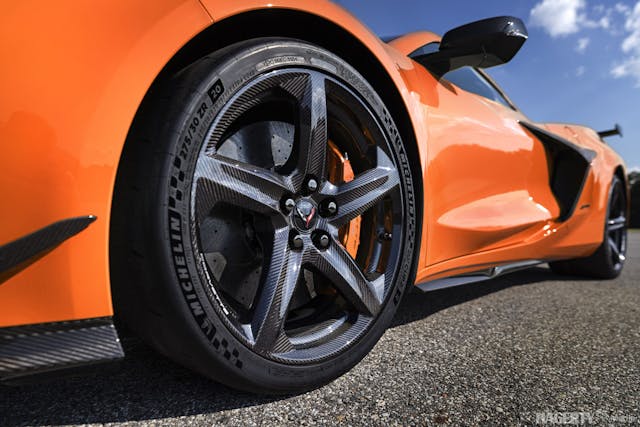
C8s benefit greatly from electronic control of power steering effort, suspension damping, and brake modulation. We expect C9 might employ a more comprehensive "by-wire" approach—electronic controls unassisted by mechanical connections. The onus will be on development engineers to provide credible steering and braking feel in addition to astute suspension damping for street and track.
Brake supplier Brembo’s new "Sensify" approach employs digital controls to manage the stopping force produced independently at each wheel. While hydraulics still activate the front brakes, rear brakes are engaged solely with electric servos. It’s a safe bet that discussions between GM and Brembo are well underway to incorporate Sensify in the C9.
Return of the third pedal?
Carrying "sim" tuning to its logical extreme, we believe that C9 could (and should) reintroduce the joys of stick-shift driving. That option disappeared because so few C7 customers bought sticks, three pedals were difficult to package with the cockpit shoved forward between C8’s front wheels, and GM couldn’t find a supplier willing to build manual gearboxes at a reasonable price. Last, routing shift linkage around the engine to a rear-mounted transmission would have posed an onerous engineering challenge.
The classic clutch pedal and H-pattern shifter could return with those controls providing signals to three electric propulsion motors (two up front, one over the rear axle) in combination with appropriate driver feedback.
Audi’s E-Tron GT and its Porsche Taycan sibling both offer two forward speeds, rather than the single-speed transmission favored by nearly every other EV. A three-speed in the C9 Corvette could be achieved with one overdrive, one underdrive, and one direct gear ratio integrated with the rear differential. First would melt the rear tires during full-bore acceleration, second would be the daily driving go-to gear, and third would act as a range extender.
The powertrain control computer would assign appropriate propulsion duties to the two small motors spinning the front wheels and the larger motor driving the rears. At the adhesion limit, the front motors would provide aggressive torque vectoring to help nudge the C9’s nose around corners. For those who don’t miss the Corvette's clutch pedal, the C9’s motor calibrations would simply optimize acceleration and handling performance without driver intervention.
Ultium Drive electric motors
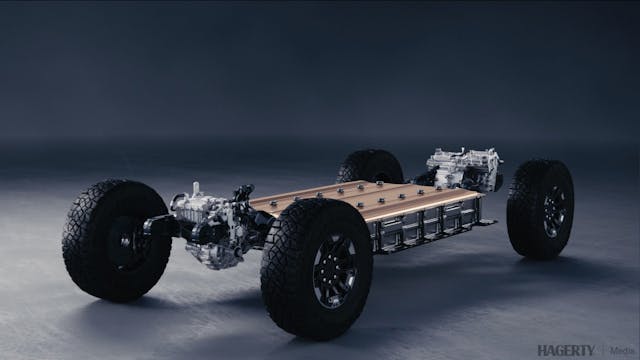
Last fall GM unveiled three AC propulsion motors it plans on producing for its Ultium BEV platforms. They are scalable designs with the flexibility to handle wide ranging electric vehicle needs. (For the record, GM’s electric motor expertise dates to 1912 when it introduced a Cadillac with Delco electric starting, a world first.)
GM’s largest AC motor is a permanent magnet design rated at 255 KW or 342 hp. The 2022 GMC Hummer EV employs three of these units providing a combined output of 1026 hp.
Permanent magnets made of neodymium, iron, and boron are built into the motor’s rotor. The stator surrounding this rotating cylinder is lined with square-section copper wire bent to fill the available space. Electric current sent through the stator windings creates the moving magnetic field that forces the rotor to spin. More current equals more spin with ample torque and rpm readily available with no combustion engine commotion.
Another electric motor attribute: no multi-speed transmission is required to multiply low rpm torque. These beer-keg-shaped energy converters are so compact they can sit atop the differential to provide drive without a power-sapping bevel gear.

Electric motor cooling needs are dramatically lower than any combustion engine. No induction air or exhaust system is required. As a result, an electric propulsion system is notably lighter and more compact than your typical internal-combustion powertrain.
We’re guessing that the C8 E-Ray, Zora, and C9 will all employ a pair of 83-hp induction motors driving their front wheels. (The alternative is a motor mounted inside each front wheel hub; unfortunately, this approach increases unsprung weight potentially degrading handling.) Add to that a 342-hp permanent magnet motor powering the rear wheels and you’ve got just over 500 hp, conveniently close to today’s base 490-hp Stingray. When more oomph is desired for upmarket C9 sisterships, Ultium’s easy scalability can be exploited.
One of the most attractive aspects of an electric Corvette is its weight-trimming potential. The C8 Z06 weighs nearly 3600 pounds due to its wider wheels, tires, and fenders. With the elimination of cooling, induction, and exhaust systems and the conversion of a gasoline tank to a battery pack, the C9 could possibly be lighter than its predecessor. An astute chief engineer would target a 3000-pound curb weight even if some sacrifice in wheel and tire width is necessary. By 2030, it's safe to assume that battery technology will have advanced to be even more compact, lightweight, and efficient than what we have available today. (More on that below.)
C9 Battery pack
In a joint venture with LG Energy Solution, a South Korea-based enterprise, GM invested $2.3 billion to build America’s largest battery plant in Lordstown, Ohio, to manufacture Ultium battery cells. Each of these pouch-type lithium-ion cells is 23 inches long, 4 inches wide, and 0.4 inches thick. It weighs approximately 3 pounds and produces 0.37 kWh of energy. A 200-kWh pack delivering 450 miles of range would consist of 576 cells and weigh about 1600 pounds, comparable to 260 gallons of gasoline.
We provide these stats as reference points because battery technology is rapidly advancing with more efficient materials and construction formats arriving daily. For example, solid-state battery construction will obsolete the liquid electrolyte present in today’s cells. A lithium-sulfur design by the startup Lyten promises to eliminate cobalt, nickel, and rare earth elements while tripling energy density and accelerating recharge time. Bottom line: GM might have to consider a battery supplier other than its partner LG.
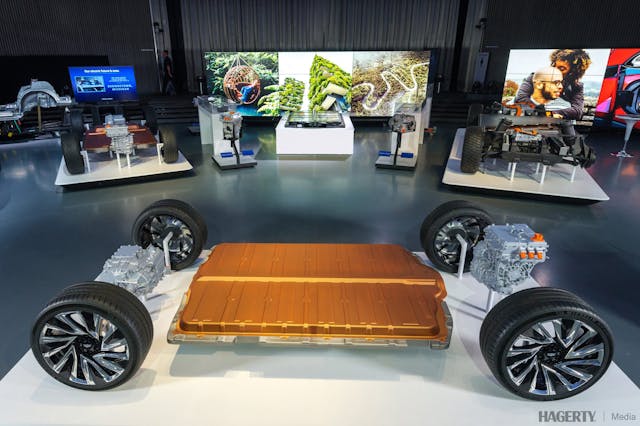
The C8 has a handy rectangular-section backbone cavity build into its spaceframe that’s ideal for battery storage. The internal volume is well over two cubic feet, enough to house more than 100 Ultium cells. Assuming that this cavity grows a bit, and factoring in battery advancements, the backbone could provide a home for at least a third of C9’s cells.
C9’s front AC motors will inevitably consume some the space currently used by C8’s handy frunk compartment. But in back, a significantly larger cargo hold should be feasible thanks to electric propulsion’s all-around compactness.
Stay of execution
In the event Corvette fans don’t enthusiastically embrace GM’s move to an electric future, there is a means of continuing today’s combustion-powered sports car. GM’s Bowling Green, Kentucky, manufacturing plant is a sprawling facility with enough space to allow C8 and C9 generations to overlap for a while. Other ICE products will likely persist in GM’s 2030 lineup, despite any grand claims to the contrary, so it’s possible that hardcore C8 fans might enjoy one final opportunity to buy their V-8-powered Corvette dream machine after the C9’s debut.
Like it or not, an all-electric Corvette is inevitable. The low-volume sports car has persisted through the decades—and a corporate bankruptcy—because it has been a platform and a showpiece for General Motors' best thinking. And make no mistake, the company is thinking almost exclusively about electric propulsion. Moreover, the move to electric provides opportunity for a shrewd step forward in both design and performance. Now that we’ve shared our crystal ball, let us know your thoughts about the coming Corvette revolution.

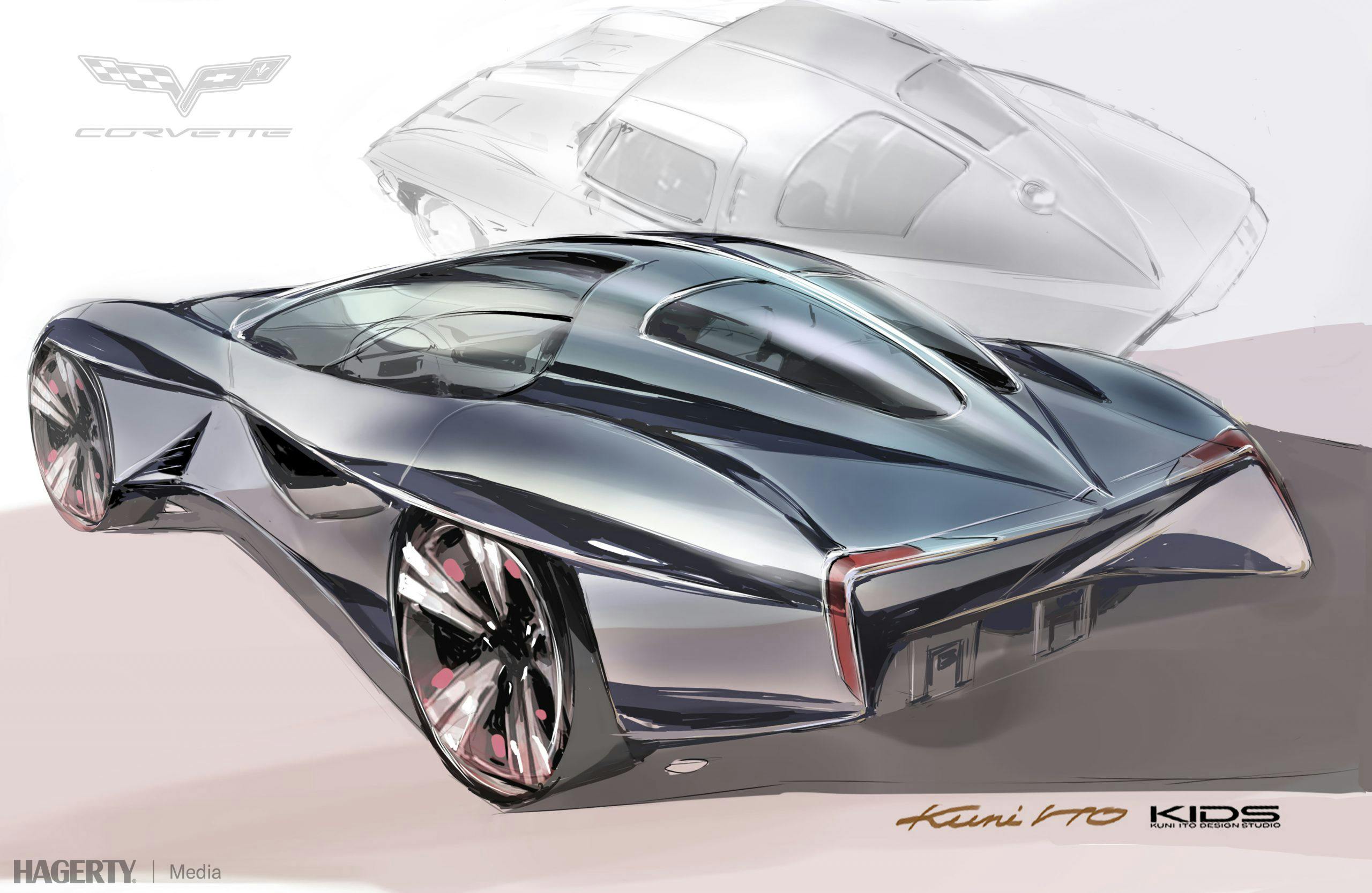
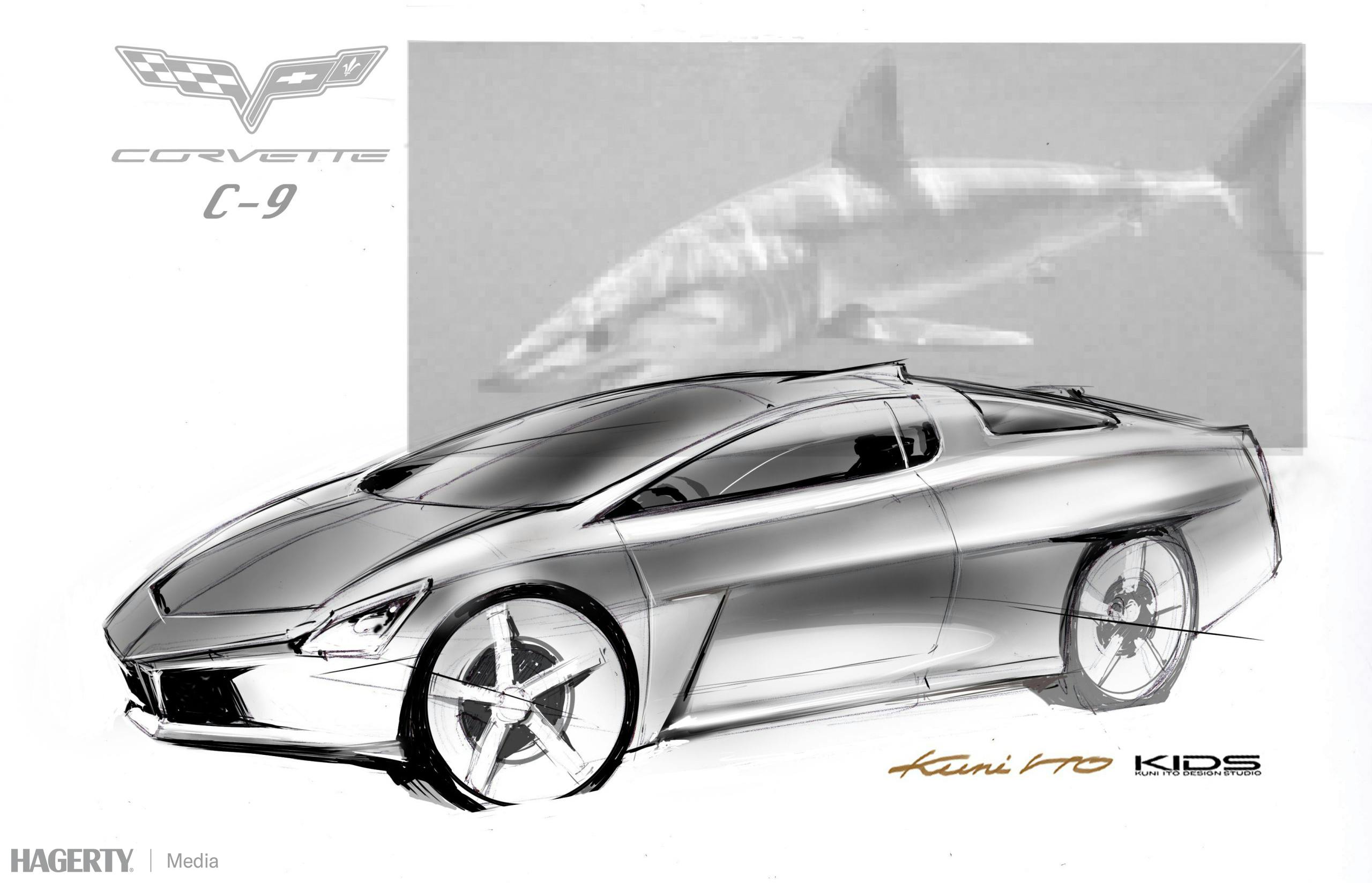
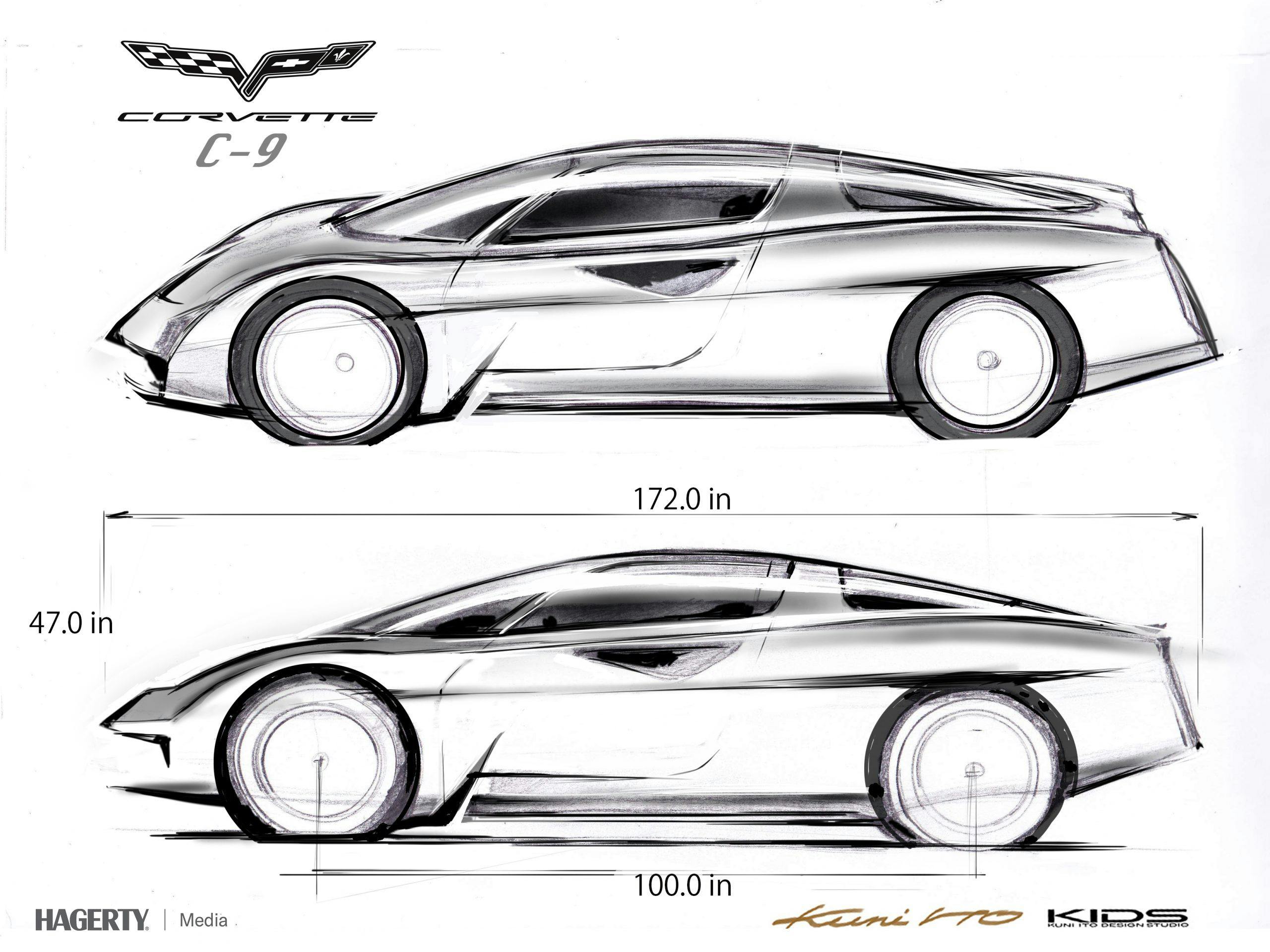
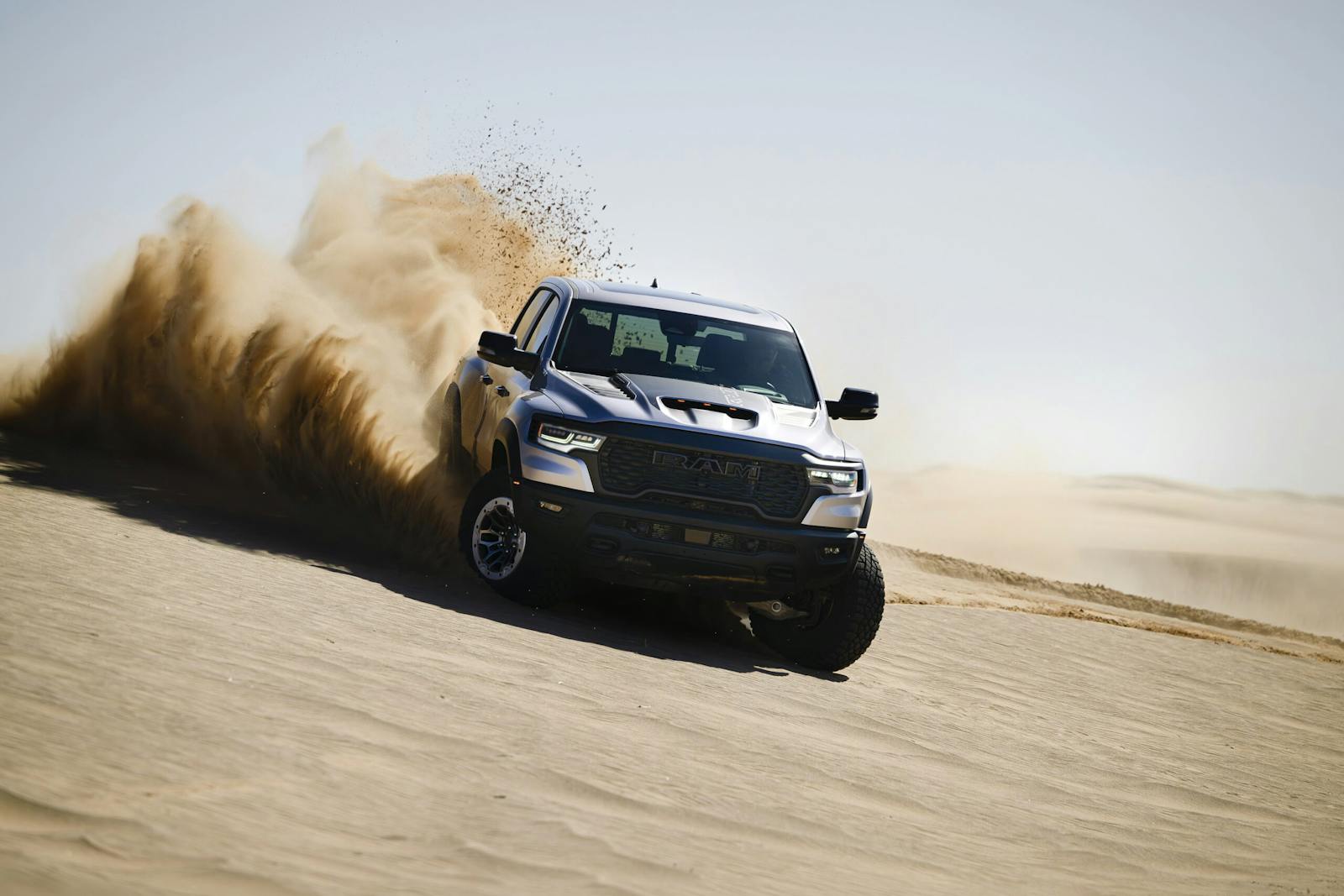
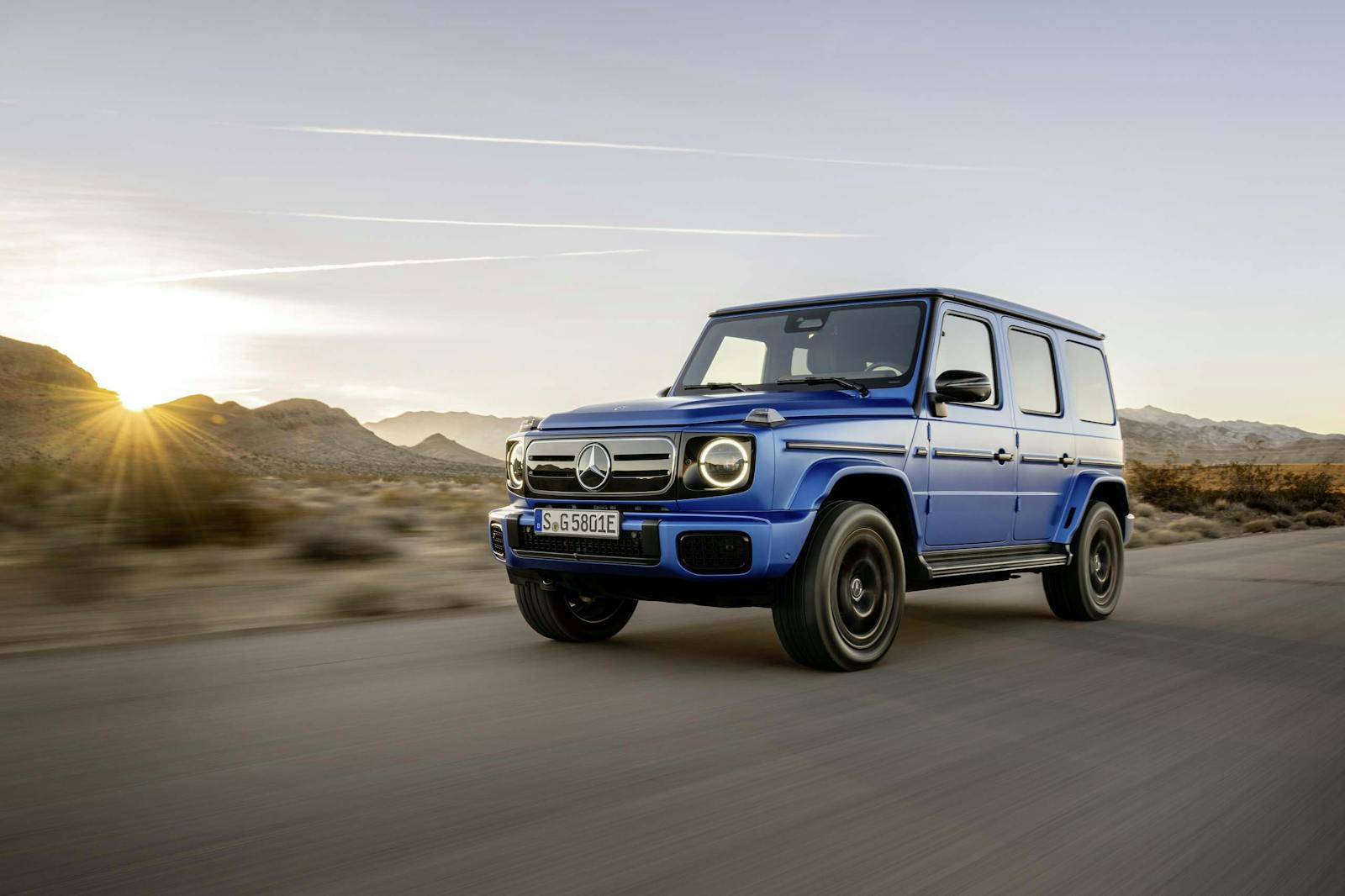
Are you kidding. Most Corvette owners want nothing to do with all electric Vette. Ms. Bara will take this proud company into another bankruptcy.
You HAVE to be joking! I’ve had 8 Corvettes driving a C8 now and hope to live long enough to have a C9. IF I can afford the dealers “finders fees”
I agree 100%
I agree with the premise that an electric Corvette is a recipe for disaster. People who purchase sports cars want power and they want it to be a driver’s car, not a commuter’s car. Marketing at GM needs to understand this. Owners of sports cars–“real” sports cars, mind you–want the visceral, loud, bold, in-your-face rawness of thousands of explosions propelling you forward. They want THAT experience. Electric-powered cars are for the soccer mom and luxury car market. To power the Corvette with batteries would be an abomination to it’s legacy, and to sports cars enthusiasts worldwide.
Agree
Electric Corvettes will do the classic car market a favor as most gearheads I know do not want any type of electric vehicle. The elimination of stick shift because GM couldn’t get a cost-effective tranny in a mid-engine car is a lot of hooley-dooley.
This is another sign that the front edge of the Apocalypse has reached GM. For starters, no more stick-shift cars or trucks; and few to none 2 door and 4 door performance sedans are produced. Not everyone wants a crossover or SUV.
Note Ford’s eMustang is a crossover, preserving the iconic brand for the purists. Chevy should do the same with the Corvette as well as keep an eye on what the importers are doing to stay solvent going forward.
You do not need a weather man to tell which way the wind blows, electric cars are the future, like it or NOT.
Fortunately I have lived thru the golden age of the automobile and don’t plan to be around when GM and others create government mandated golf carts for the masses. Don’t it always seem as though, you don’t know what you’ve got till it’s gone……
I am sick, looking back to the late 50s early 60s, when it was everyones dream to own and drive the ultimate .WTF are you people thinking.[in this case NOT]. Next will be the CTSV.
Electric only cars are not practical at this point in time and may be a long time before they become useful.
I agree. Possibly some day but a long way to go to be practical for me.
And yes I like the sound of an ICE but I suppose it could be simulated. Just hope the simulation is better than the simulated program they use to replace an interior temperature sensor for the HVAC.
100%
The only positive thing I have to say about this article is that I like Peter Brock’s rendition of the C9. Though I imagine a big V8 under the skin somewhere. What I would like to know is where and when are these surveys of Corvette owners taking place? We were at the Corvette Corral at Sebring this year and when the Corvette and Bowling Green teams were up there talking about what is to come for Corvette they asked three questions and asked for the show of hands. The tent was packed by the way. 1) Who wants a V8 in a future Corvette? Everyone raised their hand. 2) Who would be interested in a hybrid Corvette. About 40% raised their hand, including me. 3). Who would be interested in an EV Corvette? Crickets. Silence. Nobody. Repeat- NOBODY raised their hand. Corvette owners DO NO want an EV Corvette. So why is it being forced upon us?
Build electric corvette the goverment will bale you out again!
It would be nice to see the new C9 design look more like the original Corvette more curves in the front and rear fenders. The Porsche 911 and Ferrari continue to design their cars with that more classic lookas oppsed to the edgy Lamborghini.
100% Agree
I have had 10 Vettes, with numbers 9 and 10 present in the garage. Electric Vette? NO WAY!
I will not purchase any electric vehicle. It will never be as efficient as the fully aspirated engines. I have owned six generations of the corvette line and if need be I will stop purchasing any future Electric vehicles.
I suggest the designers go back to the drawing board and draw out better design. This one IMO, sucks. I would not purchase this car the way it looks now.
If electric cats are so wonderful why does the government need to charge ALL taxpayers higher taxes so ev buyers ( mostly the wealthy) will get a $7500 government incentive to buy a ev . The Global warming argument is a joke even if the west goes completely to non fossil fuels it will have ZERO affect on worldwide co emissions. China India and Russia along with Africa are building cheap coal fired electric plants by the thousands.
I currently drive a 2006 911 and have always admired Corvette’s as outstanding sports cars . I was hoping the C9 would have a little more conservative styling and was going to consider one . However if it’s going to be a ev I would never consider a c9 even if it had 2000 Hp . I will start a search for a C3 with a small block and stick .
I am not an EV person. I have no problem with EVs being in the mix as an option. I DO, however, resent being forced into an EV. Electric motors are great but battery power makes no sense to me at all. Barring any great advances in battery technologies, I don’t see any future in a battery powered EV. Perhaps some other energy source to power EVs would change my mind. I am NOT alone.
Currently own a 2019 Corvette Z06 7sp MANUAL Red/Red. No way will I buy any Corvette EV ! Would also prefer the new C8 Z06 5.5 DOHC with a cross plane ( Cadillac GTP crank ) much better sound and a STICK! Porsche has applied to German Govt for an exemption to continue to manufacture ICE engine in the future so maybe I will have to finally start buying Porsches in the future. Hope gm takes note of these replies as it looks like no one buying Corvettes is interested in a pure EV version. Next administration may kill govt incentives and EV mandates and should pass laws through congress and president to end future presidents ability to make executive orders on automotive industry standards